#africanelephants
Explore tagged Tumblr posts
Text
The Remarkable Memory of Elephants: A Journey Through Time and Space 🐘
When we think of elephants, we often admire their majestic size, intricate social structures, and gentle nature. But their memories are just as impressive. Elephants have some of the best memories in the animal kingdom. Their ability to recall details from years ago is crucial for their survival and migratory lifestyle. It is truly a remarkable journey. 🧠 Memory: A Tool for Survival 🌿 An…
#africanelephants#animalmemory#ecotourism#elephantherd#elephantmigration#Elephants#elephantwisdom#emotionalintelligence#endangeredspecies#journeythroughthewild#learnfromnature#livinglegends#matriarchpower#naturelovers#protectwildlife#safariadventure#savetheelephants#WildlifeConservation#wildlifefacts#wildlifephotography
0 notes
Text







#BeekseBergen#Photography#Photo#Zoophotography#zoo#animal#animals#animalphotography#meerkat#suricata#suricatta#Meerkats#Bird#Birds#Africanelephant#Loxodonta#africana#elephant#elephants#Okapi#Okapia#johnstoni#forrestgiraffe#zebragiraffe#Red#Panda#Ailurus#fulgens#pandas#redpanda
17 notes
·
View notes
Video
youtube
Discovering Savannah's Wildlife Wonders
Africa is a continent renowned for its diverse wildlife and stunning landscapes. Among its numerous ecosystems, the African Savannah stands out as one of the most vibrant and rich in biodiversity. Whether you are a seasoned traveler or a wildlife enthusiast, exploring the majestic wildlife of the African Savannah is an experience that will leave you with unforgettable memories. Discover the Rich Wildlife of Africa Savannah The African Savannah is a vast, open grassland that stretches across 27 countries. It is home to an incredible variety of wildlife, from the towering African elephant to the elusive leopard.
As you traverse this expansive landscape, you will witness herds of wildebeest and zebra grazing peacefully, while prides of lions bask in the sun. You may also spot the swift cheetah, the tallest land animal - the giraffe, and the solitary rhinoceros. The Savannah is not just about large mammals; it also hosts a myriad of bird species including the ostrich, the secretary bird, and the African fish eagle. In the water bodies, you will find crocodiles and hippos, adding to the diversity of this unique ecosystem.
#AfricanSavannah #Wildlife #SafariAdventure #BigFive #AfricanElephant #LionKing #Cheetah#AfricanBirds #Hippo #Crocodile
Exploring the majestic wildlife of the African Savannah is a journey into the heart of nature. It offers a unique opportunity to witness and appreciate the diversity and complexity of life on Earth. Each animal, from the smallest insect to the largest mammal, plays a crucial role in maintaining the balance of this ecosystem. So, pack your bags, grab your camera, and get ready for an unforgettable safari adventure in the African Savannah. Remember, while you enjoy the spectacle of nature, also respect and contribute to the conservation of these magnificent creatures and their habitat.
2 notes
·
View notes
Text
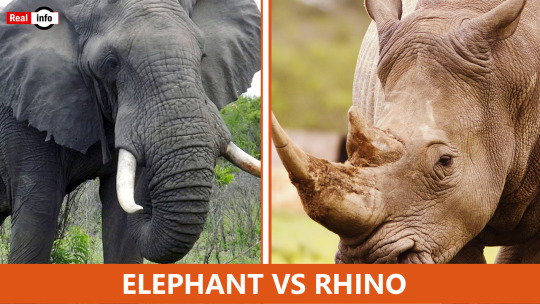
#Indianelephant, #rhinoceros #Horn #Wildlifetrafficking #BigFive #Savannah #TuskProtection #Nationalparks #Wildlifereserves #Biodiversity #Africanwildlife #Asianwildlife #Wildlife #sanctuaries #Elephant #calves #Rhinocalves #Wildlifepoachers #Conservation #efforts #Wildliferehabilitation #Antipoaching #measures #AnimalRights #Wildlifedocumentaries #Wildlifephotography, #Elephantbehavior #rhinobehavior #Conservation #organizations #Wildlifetracking #Wildliferangers #Wildlifeeducation #Ecotourism #Conservationbiology #Wildlifehabitats #Elephant #intelligence #Rhinointelligence #Wildlifeextinction #Wildlife protection #lawsAnimal #welfare #Wildliferesearch #Wildlife migration #Wildlife #populationtrends
A matchup between an elephant and a rhinoceros would be quite the spectacle! Both are massive animals with unique features and strengths.
In terms of sheer size, African elephants are the largest land animals, weighing several tons and standing up to 13 feet tall at the shoulder. Rhinoceroses, on the other hand, are smaller but still formidable, with the largest species, the white rhinoceros, weighing around 2.2 to 3.6 tons.
In a confrontation, the outcome would likely depend on various factors such as the species of elephant (African vs. Asian), the species of rhinoceros (white, black, Indian, etc.), the individuals involved, and the circumstances of the encounter.
Elephants are known for their intelligence, social structure, and formidable strength. Their tusks can be used as weapons, and they have powerful trunks that can push over trees and fend off predators.
Rhinoceroses, while not as agile or intelligent as elephants, possess thick, armor-like skin and formidable horns. Their charge can be incredibly powerful, and they have been known to flip vehicles in confrontations.
youtube
#Elephant#Rhino#Wildlife#Conservation#Safari#Endangered species#Ivory#Poaching#Habitatloss#Africanelephant#Indian elephant#rhinoceros#Horn#Wildlifetrafficking#BigFive#Savannah#TuskProtection#Nationalparks#Wildlifereserves#Biodiversity#Africanwildlife#Asianwildlife#sanctuaries#calves#Rhinocalves#Wildlifepoachers#efforts#Wildliferehabilitation#Antipoaching#measures
2 notes
·
View notes
Text
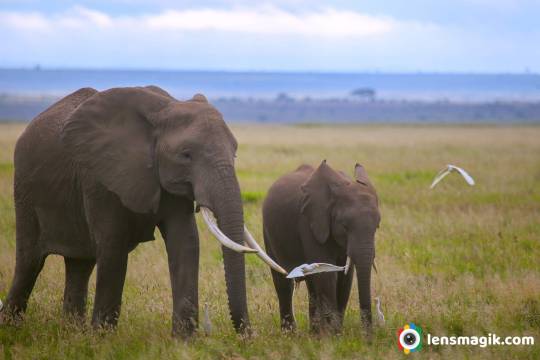
#africanelephant#elephant#elephantphoto#elephantfamily#big5africa#bigfiveafricananimals#africansavanaelephant#africanbushelephant#masaimara#amboselinationalpark#masaimaranationalpark#masaimarasafari#largestlandmammals#aboutafricanelephant#factsaboutafricanelephant#africanvsasianelephant#canonphotography#wildlifephotography#bbcwildlife#sanctuaryasia
2 notes
·
View notes
Text
Dangerous Animals: The animal kingdom has all kinds of creatures, some are peaceful and attractive, while others are quite dangerous. In this article, we'll look at the ten most dangerous animals in the world that you definitely don't want to come across. These animals are feared and respected because they have the ability to cause harm and pose a serious threat to humans. From huge bears to poisonous snakes and sneaky predators, the animal kingdom is home to some of the most powerful enemies on our planet. 1. Grizzly Bear Grizzly Bear In the animal kingdom, there are peaceful and attractive creatures, as well as dangerous ones. In this article, we will explore the top ten most dangerous animals in the world that you would never want to encounter. These animals are both feared and respected because they can harm humans and pose a serious threat. From large bears to venomous snakes and stealthy predators, the animal kingdom is home to some of the most powerful enemies on Earth. 2. Great White Shark Great White Shark The Great White Shark, made famous by Steven Spielberg's movie "Jaws," is a large predator weighing between 1500 to 2450 pounds and reaching lengths of around 20 feet. Despite its fearsome reputation, actual attacks on humans are relatively rare. While it may bite something out of curiosity, it typically doesn't prefer the taste of humans. However, encountering a Great White Shark is still a worrisome situation due to its size and predatory instincts, which make it a potential threat. Shark attacks occur worldwide, but the number of fatalities remains low, with approximately 80 reported attacks and only five resulting in death in the past year. 3. Hippopotamus Hippopotamus The Hippopotamus, often seen as calm and gentle, actually exhibits aggressive and territorial behavior. Despite its large size, averaging around 3310 pounds and measuring about 5.2 feet, this semi-aquatic creature can reach speeds of up to 19 mph. It has been known to attack humans by flipping over boats and rafts, perceiving them as a threat to its territory. With its powerful jaws and notorious temperament, the Hippopotamus has caused a significant number of human fatalities in Africa. 4. Stonefish Stonefish The Stonefish, the most venomous fish in the world, is a master of disguise. It resembles a stone or coral and can be found in coastal waters of the Indian and Pacific Oceans. Although not naturally aggressive, its camouflage often tricks unsuspecting swimmers into stepping on it, triggering the fish to release its venom. The venom causes intense pain, tissue damage, difficulty breathing, and temporary paralysis. If left untreated, it can be deadly. Despite its danger, the Stonefish is considered a prized delicacy in countries like Japan and China, making it highly valued and expensive. 5. African Buffalo African Buffalo Known as the “Black Death,” the African Buffalo roams the forests and savannahs of Africa. Weighing up to 2000 pounds and capable of running at speeds of 40 mph, it is an incredibly powerful and dangerous species. The African Buffalo can face off against lions and crocodiles, often ramming and overturning vehicles with ease. Its territorial nature and aggressive behavior result in approximately 200 human deaths annually on the African continent. 6. Lion Lion The mighty Lion, known as the king of the jungle, cannot be left out of this list. Standing at around 4 feet tall and weighing up to 400 pounds, Lions can be a threat to humans, although they usually avoid attacking them. Most recorded cases of lion attacks are linked to sick or injured males that see humans as vulnerable prey. Once a lion successfully hunts a human, the chances of future attacks may increase. Over 500 lion attacks are reported every year, so it's important to be cautious when encountering them. 7. Saltwater Crocodile Saltwater Crocodile
The Saltwater Crocodile, the largest reptile in the world, is a fearsome predator. Weighing up to 2600 pounds and measuring up to 20 feet long, it has one of the strongest jaws in the animal kingdom. Saltwater Crocodiles view humans as prey and can display unpredictable aggression. In Africa, it is recommended to stay away from their habitat entirely due to the significant danger they present. In Australia alone, there are over 20 attacks by Saltwater Crocodiles each year, usually driven by territorial instincts or when they feel threatened. They are responsible for the majority of crocodile attacks on humans. 8. Black Mamba Black Mamba The Black Mamba, known as Africa's most venomous snake, has a bold and unpredictable temperament. It can grow up to nearly 10 feet long and strike within a radius of 44 yards, delivering a deadly dose of venom. Its bite, often called the "kiss of death," injects 100 grams of poison, with just 10 grams being enough to kill a person. Symptoms of a Black Mamba bite include blurred vision, fainting, respiratory arrest, or heart failure. Immediate treatment is crucial, but in some parts of Africa, access to antidotes is limited, making encounters with this snake extremely dangerous. 9. Box Jellyfish Box Jellyfish The Box Jellyfish, mainly found in Australia, may seem harmless because of its transparent and small size. However, it is one of the most venomous creatures in the world. Its tentacles can extend up to 10 feet long, and its venom is capable of causing death within minutes if not treated immediately. The venom affects the nervous system and can even cause cardiac arrest. The best way to avoid this deadly creature is to avoid any contact with the water altogether. 10. Mosquito Mosquito Although not a typical predator, the mosquito is considered the most dangerous animal due to the diseases it carries. Mosquitoes are responsible for spreading various illnesses and parasites like malaria, yellow fever, Zika virus, and dengue, causing the deaths of more than 725,000 people each year. Despite their small size, mosquitoes have a global presence and pose a significant threat, especially in areas where preventive measures and treatments are limited. In terms of sheer mortality, mosquitoes surpass the combined impact of many other dangerous animals. 11. Cape Buffalo Cape Buffalo The Cape Buffalo, also called the African Buffalo, is a strong and extremely aggressive animal. It can weigh up to 2000 pounds and stand about 5.6 feet tall, with horns that can reach up to six feet in length. Cape Buffalos have caused many deaths in Africa, particularly among hunters and poachers. They can charge suddenly, and when they're in a group, they become even more dangerous. Their behavior is unpredictable, and they are ready to defend themselves and their herd at any moment. Dealing with them requires caution and respect due to their formidable nature. 12. Pufferfish Pufferfish The Pufferfish, also known as the Blowfish, may look cute and harmless when inflated, but it is actually one of the most poisonous fish in the world. Its defense mechanism involves puffing up its body into a spiky ball by swallowing water or air. Although not aggressive, the Pufferfish carries a powerful neurotoxin called tetrodotoxin. Even a small amount of this toxin can cause paralysis, organ failure, and death if ingested. Despite its deadly nature, some cultures consider Pufferfish a delicacy, but preparing it safely requires extensive skill to remove the toxic parts. 13. Cone Snail Cone Snail The Cone Snail, hiding in the oceans, is a stunning but dangerous predator. Its beautifully patterned shell attracts unsuspecting prey. However, this marine creature has a venomous harpoon-like tooth that it uses to inject neurotoxins into its victims. The venom can lead to paralysis, respiratory failure, and even death in humans.
Unfortunately, there is no effective antivenom available, making encounters with these snails potentially fatal. It serves as a reminder that the ocean holds hidden dangers, even in seemingly harmless creatures. 14. African Elephant African Elephant Elephants are often seen as big and gentle animals, but the African Elephant can be extremely dangerous in certain situations. They can weigh up to 12,000 pounds and stand over 10 feet tall, making them capable of trampling or injuring anything that comes in their way. Elephants typically attack humans when they feel threatened or when their territory is invaded. Despite being herbivores, they have immense strength and should be approached with caution and respect. 15. Komodo Dragon Komodo Dragon The Komodo Dragon, found in the Indonesian islands, is the biggest lizard in the world. It can reach lengths of up to 10 feet and weigh over 150 pounds. While it mainly eats dead animals, the Komodo Dragon is also a skilled predator with a venomous bite. Its saliva contains harmful bacteria that can cause serious infections, resulting in a slow and painful death for its prey. Although it's uncommon, attacks on humans by these powerful reptiles can be deadly. 16. Inland Taipan Inland Taipan The Inland Taipan, also called the "fierce snake," is the most venomous land snake in the world. It is found in the dry areas of central Australia and its venom is highly powerful. Just one bite can contain enough venom to kill multiple humans. Thankfully, the Inland Taipan is usually shy and tries to stay away from humans. However, because its venom is so potent, any encounter with this snake should be handled with extreme care. 17. Cape Cobra Cape Cobra The Cape Cobra, found in southern Africa, is another snake with a potent venom. It has a remarkable hood and can grow up to six feet long, commanding admiration. Its venom targets the nervous system and can cause breathing problems. Cape Cobras are defensive creatures and will bite if they feel endangered. People often come across this snake in areas close to human settlements, so it's important to be careful and get immediate medical help if bitten. 18. Sydney Funnel-web Spider Sydney Funnel-web Spider The Sydney Funnel-web Spider, native to Australia, is widely known as one of the most dangerous spiders in the world. Its venom is extremely powerful and can lead to serious illness or even death if not treated. These spiders are aggressive and their bites can be very painful. Encounters with humans usually occur when the spider feels threatened or accidentally comes into contact with people. It's important to seek immediate medical help if bitten, as there is antivenom available to counteract the venom's effects. Also Read : 7 Exotic Animals You Can Keep As Pets At Home Conclusion Our planet is filled with many dangerous animals, including venomous snakes, spiders, mighty mammals, and cunning predators. Each creature has its own distinct features and potential dangers. It is crucial to learn about their behaviors, habitats, and the risks they pose in order to stay safe while appreciating the incredible diversity of the animal kingdom. By educating ourselves, conserving their habitats, and living responsibly alongside these creatures, we can reduce the risks associated with dangerous animals and create a harmonious relationship with nature. Source Image : discord.com
#Animal#AFRICANBUFFALO#AfricanElephant#animals#CapeBuffalo#CapeCobra#ConeSnail#Hippopotamus#InlandTaipan#KomodoDragon#Mosquito#Pufferfish#SydneyFunnelwebSpider
0 notes
Photo

African Bush Elephant (Loxodonta africana) at Sedgwick County Zoo #africanbushelephant #africanelephant #elephant #zoos #zoosmatter #zoophotography #zoophoto #sedgwickcountyzoo https://www.instagram.com/p/CpnN55gOzkN/?igshid=NGJjMDIxMWI=
#africanbushelephant#africanelephant#elephant#zoos#zoosmatter#zoophotography#zoophoto#sedgwickcountyzoo
0 notes
Text
वन्यजीव प्रेम के प्रतीक अनंत अंबानी, दीपावाली पर गजराज सेवा, अफ्रीकी हाथियों को भारत लाकर उन्होंने दिखाया कि करुणा और सेवा में कितनी शक्ति है #Vantara #Elephants #Animals #AnantAmbani #WildlifeRescue #Africanelephants #AnimalCare, #Jamnagar
0 notes
Text
दीपावली में तीन अफ्रीकी हाथियों का वनतारा में स्वागत, अनंत अंबानी ने वन्यजीवन प्रेम और संरक्षण के प्रति अपनी जिम्मेदारी का अद्भुत परिचय दिया है #Vantara #Elephants #Animals #AnantAmbani #WildlifeRescue #Africanelephants #AnimalCare, #Jamnagar
0 notes
Text
Fun Fact: Elephants have incredible memories. This is especially true for matriarchs, the female leaders of elephant herds. They can remember the locations of water sources and recognize other elephants or humans they haven't seen in years.
This strong memory is essential for their survival, particularly during dry seasons when they have to find water and food over vast areas. #Olwatuka #elephants #africanelephants #Africa #mammals
instagram
0 notes
Text
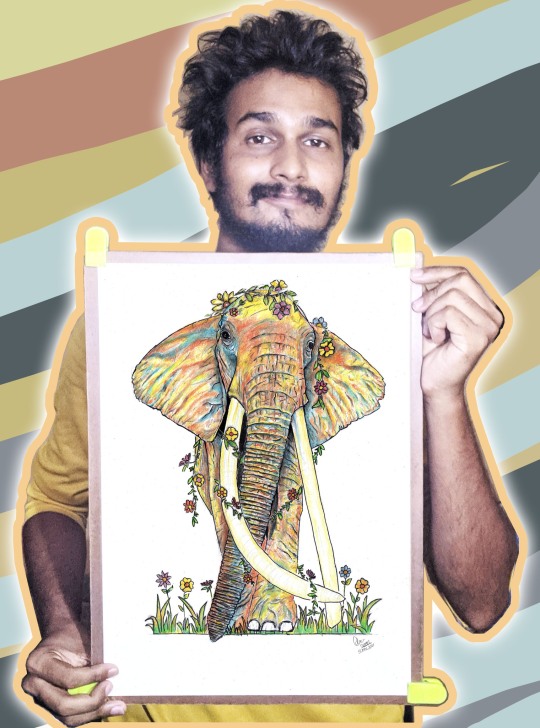
Hey Everyone! 😍❤ Here it is ! I have finally finished this piece after a very long time and so many hours put into it, it was a beautiful journey and all the time spent has been totally worth it ! 🐘 . "Flower Girl" A Giant Tusker with Flowers. 42x30 cm | 16.5x11.7 inches. . I hope you enjoy it as much as I did working on it !❤ . This Original Piece is now on SALE and looking for a new Home🏠! Do message me if you would like to own it or visit this link to my online store - https://shaelsart.com/shop/ols/products/flowergirl . The Prints are also now available and I am giving 25% OFF on this print for the first week ! use code : FLOWERGIRL , here is a link to it from my online store - https://shaelsart.com/shop/ols/products/flowergirlprint . 20% of all my sales go towards saving Elephants🐘 . . And hey, your support truly means the world to me! ❤😘 I couldn't have done all of it without you🌸, your purchases, comments and all your love for my work has brought me this far. do SHARE this artwork with your fellow Elie lover friends and family if you can 😍❤. . . Thank you so much for being here ! ❤🐘 Enjoy your time ahead! . . fb.com/shaelsartistry . #elephants #elephant #wildlife #elephantlove #elephantsofinstagram #elephantlover #elephantlovers #animals #nature #babyelephants #elephanttattoo #elephantfamily #africa #africanelephant #wildlifephotography #bekindtoelephants #loveelephants #elephantbaby #elephantseals #elephantart #savetheelephants #saveelephants
1 note
·
View note
Text

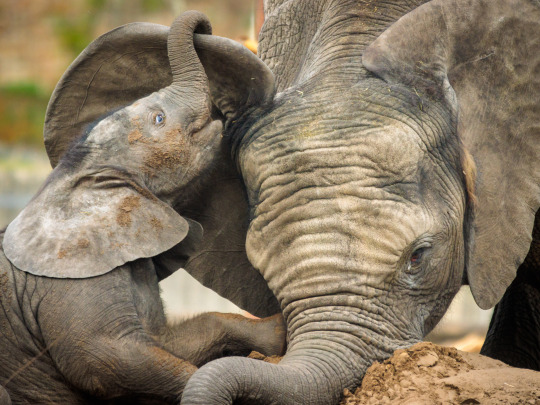

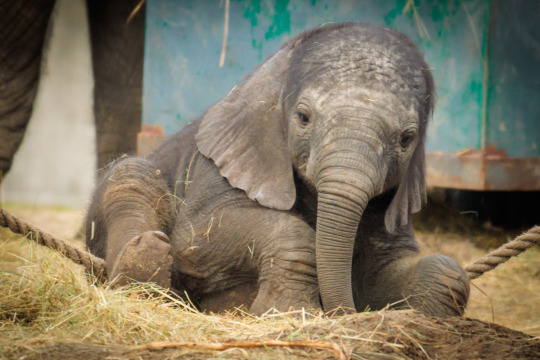
#BeekseBergen#Photography#Photo#Zoophotography#zoo#animal#animals#animalphotography#Africanelephant#Loxodonta#africana#elephant#elephants
4 notes
·
View notes
Video
youtube
Giants of Kruger National Park The Majestic Elephants | Top Big Five Africa Destination.
The Majestic Life of Elephants in Kruger National Park: An In-depth Look at Africa's Iconic Giant.Explore the fascinating life of the African Elephant in Kruger National Park, South Africa. From their diet to their behavior, learn how these iconic giants contribute to the ecosystem.Dive into the captivating world of the African Elephant, one of the Big Five most viewed and photographed on African safaris.
This comprehensive guide takes you through the life of an elephant, from its early days as a baby to its growth into a giant adult. Discover what these majestic creatures eat, their unique behavior, and their significant role in the ecosystem. Learn about their territorial fights and the dominance of the giant males. Experience the daily life of these elephants in the stunning setting of Kruger National Park, South Africa, and understand their crucial contribution to nature. Visit https://nisafari.com for top travel destinations articles and more videos like this.
#AfricanElephant #KrugerNationalPark #BigFive #AfricanSafari #ElephantLife #Ecosystem #Nature #WildlifePhotography #Elephant
1 note
·
View note
Text

Elephant Quick Sketch
Graphite on recycled/reused paper
Darkened for viewing
Elephants are amazing!
Fun Fact:
Elephants can hear approaching clouds.
#mautdesigns #sketchart #recycle #practicemakesperfect #recycled #reuserecycle #reuse #practicepracticepractice #elephant #elephant🐘 #elephantart #elephantlover #elephantsofinstagram #elephants #africanelephant #africanelephant🐘 #africanelephants
1 note
·
View note
Video
Elephants playing as mom and her baby walk by ****************************************** This is a #repost from @all.part.of.the.adventure via @PhotoAroundApp Play time all the time! 🐘 #Elephants #AfricanElephants #ElephantsPlaying #ElephantMom #Elephant #PeacefulElephants https://www.instagram.com/p/B8OID-WAIT3/?igshid=s6yadjq02j62
6 notes
·
View notes
Video
instagram
Credit © 🎬 🖋 ✅ @elephant_stories_with_fiona When you need a little drink and a little pee.....I am loving going through my stories..... elephants bring back so many memories for me. Most of my photos I remember the location, the moment, even the weather, a photographic recall to reflect the moment I have captured. Life is about the past, the present and the future, manifested as reflections, thoughts, hope and dreams.... Elephant lives need a future more than ever......if you can help to donate to .orgs, foundations and sanctuaries, all of whom work hard for conservation, protection and ethical tourism, for elephants, please kindly consider helping. Remember your contribution is priceless, no amount is too small. Enjoy this little wild baby in Samburu, Northern Kenya. It is one of my favourite moments..... Thank you Friends. Love - Fiona 🐘💙 #elephants #africanelephants #asianelephants #conservation #wildlifeconservation #africa #asia #thailand #wanderlust #backpackers #safari #kenya #botswana #masisi #itseasywithmasisi #banelephantculling #bantrophyhunting #bantrophykillers #bekindtoelephants https://www.instagram.com/p/B_p6yC5hv_k/?igshid=pr3d4yfo0ylj
#elephants#africanelephants#asianelephants#conservation#wildlifeconservation#africa#asia#thailand#wanderlust#backpackers#safari#kenya#botswana#masisi#itseasywithmasisi#banelephantculling#bantrophyhunting#bantrophykillers#bekindtoelephants
1 note
·
View note